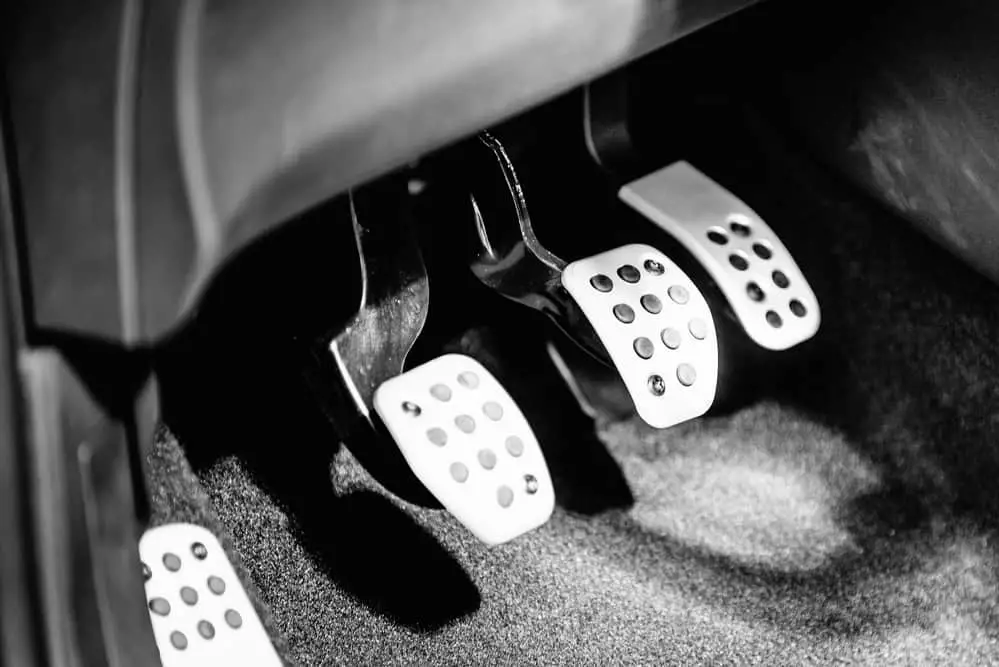Race images that show everything from drivers shifting hard using a pedal and gear shift to engaging the next gear simply by flipping a lever on the steering wheel make it hard to know exactly what drivers in NASCAR use to shift gears.
Key Points:
- NASCAR cars utilize a semi-manual shifting system involving a lever on the steering wheel.
- The system combines elements of manual and automatic transmission to shift gears quickly.
- Drivers use both a pedal and the steering wheel lever in order to facilitate efficient gear shifts.
Are they the standard clutch pedal and gearbox combination found in the manual transmissions of stock cars’ street-legal counterparts, or is it closer to an automatic transmission where the computer does the work?
The answer isn’t straightforward, as the way the transaxle unit is driven has changed in generation 6 cars, and later models of vehicles have evolved even further. Figuring out the difference between the current five-speed manual sequential transmission and the previous four-speed manual transmission is hard enough before you get to the hardware that controls the engine RPMs, and this article will help to clear up some of the confusion.
Read on to find out if NASCAR cars have a clutch and how drivers use them.
How Do Racers Change Gears in NASCAR Vehicles?
NASCAR drivers change gears similarly to how drivers with regular transmissions do in they use a clutch pedal and gear shift. Newer generations use a gear lever that prevents moving away from the correct gear, but the clutch still needs to be engaged to work.
In race cars with straight-cut gears, the clutch pedal is mainly used to go into reverse gear, to move back into first gear, and to prevent stalling at race starts. While actively racing, the drivers will switch gears only by moving the gear shift and won’t bother slamming the clutch pedal first.
Cars with more advanced transmission development will have a gearbox replaced with a switch that lets drives flip up or down gears without the effort needed to find the correct gear in an h-shaped gearbox. Current engines are allowing for a less bulky rear-mounted transaxle, and a sequential five-speed transaxle can help bridge the technological gap needed for electric drivetrains.
With a transformed rear transaxle layout, the all-new sequential manual transaxle will give race car manufacturers even more options in the future.
What Gears Do NASCAR Cars Have?
Depending on the age of the car and the series it is currently racing in, the vehicle will have different gear configurations. Older series cars will have a traditional racing clutch with an h-shape and a 4-speed manual transmission.
Newer race cars have a shifter on the steering console that makes it easy to go up and down gears. These are 5-speed sequential manual transmissions. All types of transmissions in NASCAR vehicles have a reverse gear.
NASCAR Gear Shifts Over the Years
Some aspects of NASCAR vehicles have stayed consistent over the years, like large, roaring, naturally-aspirated engines. Other components, like how drivers will change gears, have been drastically reinvented over the decades. Below is a look at how the NASCAR gear shifts have changed over the years.
| Year | Type of Gear Shift | Benefits |
| 1940s | 4-speed standard H-pattern manual transmission with a floor-mounted gear stick | Identical to street car parts, easy to manufacture and source, and familiar to the racers |
| 2000s | Traditional transmissions but with straight-cut gears and a gear stick shift lever | The shape of the gears allows for shifting up and down without the need to engage the clutch pedal and no grinding |
| 2020s | A sequential five-speed transmission is used in the latest generations of NASCAR models, which adds faster and more accurate shifting capabilities for racers | Ensures a more even playing field in terms of transmission components and ensures the driver doesn’t enter the wrong gear when shifting up to a faster gear |
What Is the Next-Gen Clutch Like?
A new five-speed manual transaxle has been added to the next-gen cars. Drivers have a clutch pedal that is mainly used for shifting into reverse gear and preventing the engine from stalling at the start of races.
The driver has a shifting lever attached to the steering column and can go up a gear or down a gear by simply flipping a finger. This new system is meant to work with future electric drivetrains so NASCAR stock cars will more closely resemble the high-tech street cars they are based on.
Do NASCAR Cars Have Clutches, Brakes, and Accelerators?
Vehicles used in NASCAR races have all three pedals, and drivers use them all during races. A reverse gear is crucial to help divers get their cars in start-up position and to go back if they overshoot the pit stop. Without the clutch to throw the car in reverse, drivers would need to tow their cars everywhere.
Brakes are obviously crucial for drivers who would crash almost immediately without a brake system. The brakes in NASCAR cars can stop a car very quickly and are designed to produce less heat and friction to prevent fires under cars. Future brakes may include regenerative braking technology to increase the mileage a car will get in a race.
The gas pedal feeds the fire and propels racers forward. There is no way the sport would be any fun without an accelerator unless monster trucks are involved. The driver will press down and ease off the accelerator constantly during the race saving braking for hard turns or other emergency situations.
The combination of clutches, brakes, and accelerators gives racers the control they need to push their cars to the edge.


